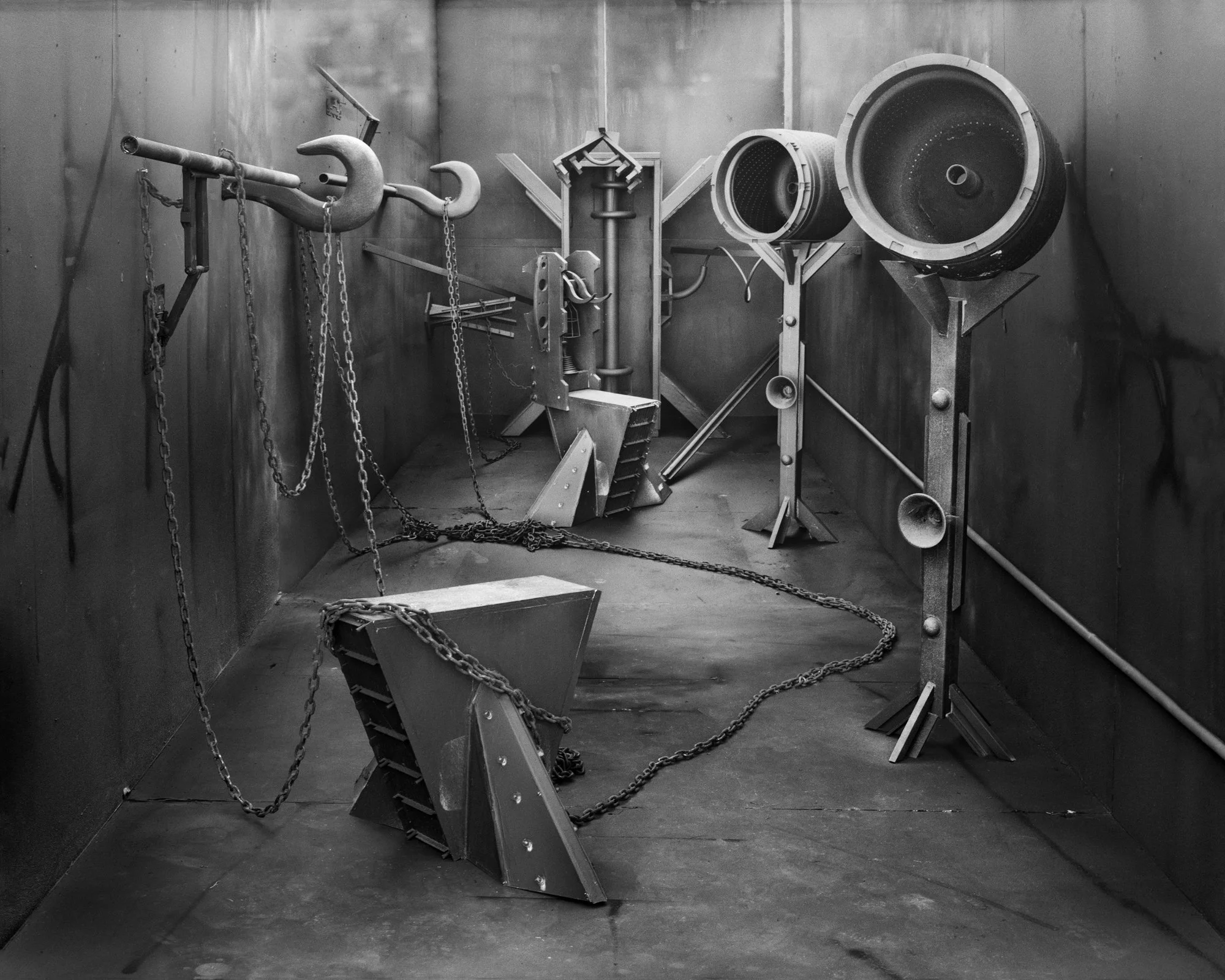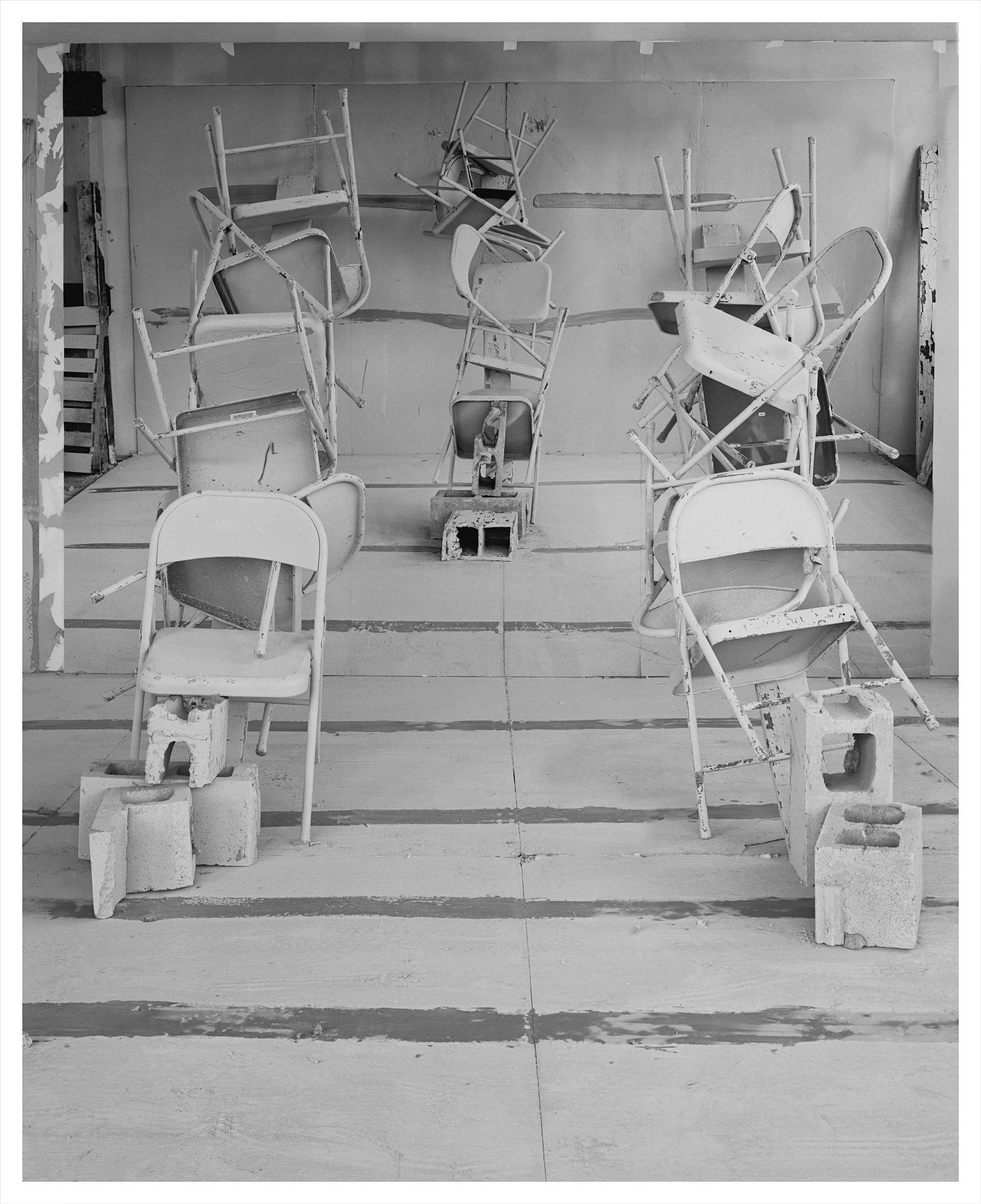Rodrigo Valenzuela
Portrait by Robert Wade
Musée Magazine: How did you discover photography? What about photography was alluring to you?
Rodrigo Valenzuela: I studied photography at the University of Chile. Still, I didn’t think much about it until I did my second bachelor's at Evergreen State College, where I used the medium as an excuse not to write papers. I discovered that thinking visually and using the camera to answer philosophical problems was much easier for me than learning English.
Musée: Often in black and white, your photographs highlight both the darkness and the light that they capture. What makes you return time and time again to black and white photography?
Rodrigo: There are two ways to respond to this question. The most straightforward way is that black and white is quicker, I can shoot during the day and develop the film at night, so I know what is working and what is not working for the following day. The second answer is that the absence of color strips the objects from fashion and temporarily. The communication between the objects that I make becomes more direct so let the connection that could happen among all the elements in the most basic formal state create the meaning.
Rodrigo Valenzuala, Courtesy of the Artist
Musée: Please talk about your artistic process for Creatures of the Grind series. What thoughts or intentions guided your choices when creating these images?
Rodrigo: It feels like the only way to imagine an alternative to capitalism is through sci-fi. In the real world there doesn’t seem to be a lot of room for metaphor, whereas in science fiction it’s easier or possible to imagine a world where you can point out the problems of our neoliberalism. When you see that things are being made by hand, you can tell there are flaws; but you can also tell that there is intentionality in the flaws. You can see in my work that there are a lot of problems, but the problems also make it unique. I think understanding the value of labor has been a problem for a long time in contemporary society.
Musée: What prompted this project, and how did it come to be what it is today?
Rodrigo: For years I have been researching the history of labor unions; as soon as the pandemic started, I knew that would create the perfect conditions for labor disassociation. I have been working on this trilogy on modernism and political oppression since 2018; the last part of the project is called New works for a post worker’s world. Creatures of the grind is a component of this series. The work is made of silkscreen prints like a propaganda poster printed on times cards (to check in and out of work), full of mark-making and labor residue. This felt like the right move to display all the animal-like weapons I have been making at my studio.
Rodrigo Valenzuala, Afterwork #5, Courtesy of the artist.
Musée: Who is your intended audience for this project?
Rodrigo: Anyone that wants to think about class issues in society in general and particularly in art.
Musée: Your photographs in the Creatures of the Grind series show machines in enclosed spaces with no human presence. What do these images say about the relationship between man and machine, and the future of automation in the modern world?
Rodrigo: There are fears and mythologies around automatization that could easily be called the ruse of the machine. Since the industrial revolution, the idea of machines taking people's jobs has been present, and indeed, they have modified production, but the machines have not suppressed capitalism's insatiable exploration of labor
Rodrigo Valenzuala, Courtesy of the artist.
Rodrigo Valenzuala, Courtesy of the artist.
Musée: We can think of these machines as decaying and abandoned by man in search of better, newer technology, which elicits a sense of constant movement towards collapse. What feeling do you want to evoke in the viewer when looking at these images? Do you want them to feel a sense of impending ruin, hope for change in the future, or something else entirely?
Rodrigo: The post-apocalyptic, doomed-like tone of the show is just one if the possibilities if we don’t start thinking seriously about labor issues and class in this country.
Musée: What do you believe has made you an artist? Going forward, who or what inspires you to continue making art?
Rodrigo: I didn’t grow up as a talented kid, but I always searched for a rich intellectual and emotional life. Keeping alive curiosity, resourcefulness, a sense of inquiry, and an active voice are things that make me make art. I use what I learn in my studio practice to become the best teacher I can be so future generations of artists can overcome any kinda social limitation with their intellect and passion.
Rodrigo Valenzuala, Afterwork #1, Courtesy of the artist.













